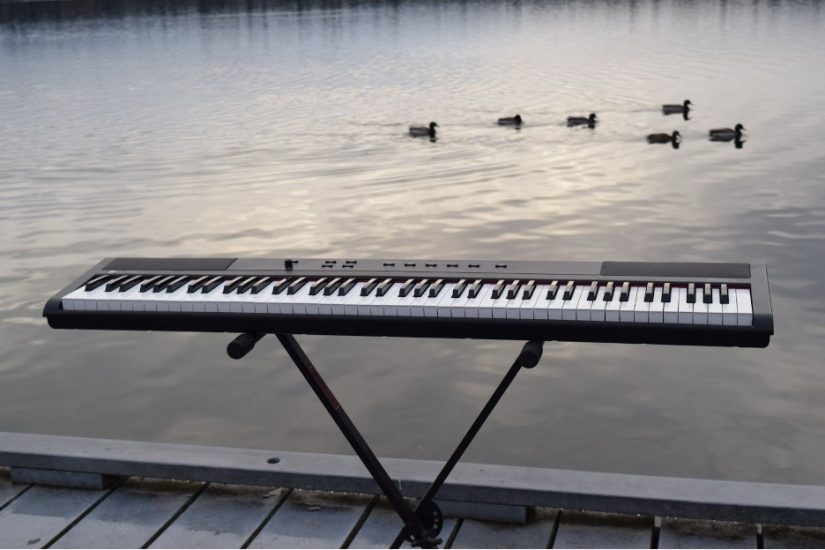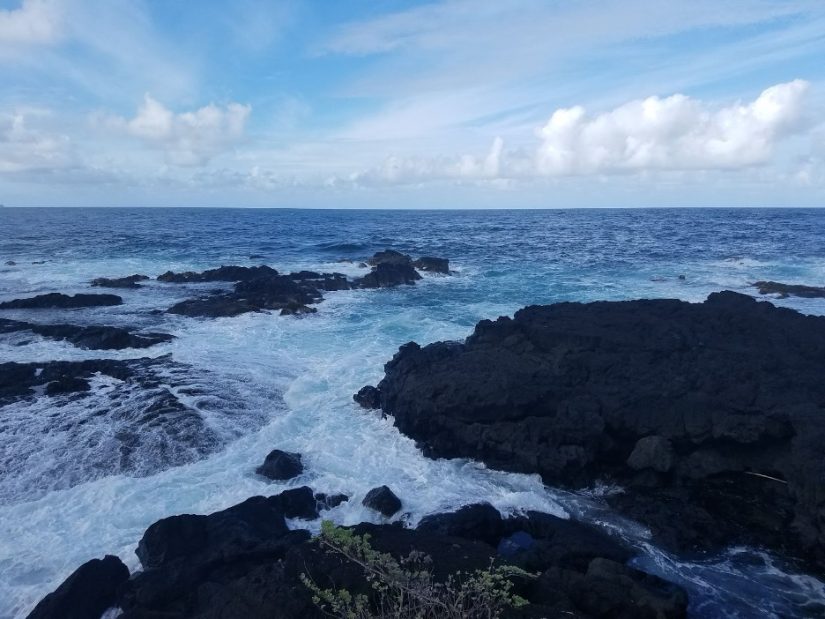Nature and Music—Honoring Life Under the Sun
Over two thousand years ago, Taoist philosophers thought of music as “a potent cosmic force capable of expanding human intelligence and enhancing communion with the non-human world.” These ancient philosophers were some of the earliest knowledge practitioners on the important intersection of nature and music. This idea of music as an essential part of existence is why I find myself huddled at a desk writing this article. As a musician and an environmental scientist, I often contemplate how we represent nature in music. By incorporating nature in music, I believe we honor and revere life itself. It’s a beautiful bond, but to begin elaborating on this connection, I must first address our human understanding of the origins of music.
For such an integral part of humanity, there is little consensus on the origin of music.
Music has been denoted as a cultural universal, which is understood as a pattern or trait that is found globally in all societies. But this description does not give us a good sense of the beginning. In terms of evidence for music, the oldest known musical instruments (which were bone flutes) appeared in the archaeological record 40,000 years ago. Considering that musical artifacts and activities are not well represented in the archeological record, it is possible that instruments were used even earlier.
Humans themselves can be instruments. Many evolutionary scientists argue that our modern human instinct to sing is equal to our predisposition for speaking, so the conception of humanity is the conception of music. Beyond humans’ interaction with music, modern scientific theory has suggested the possibility that music predates humanity based on the similarities in song structure among whales, birds, and humans. The argument here is that with an infinite number of possible sounds to choose from, why do birds and whales make notes similar to the human musical soundscape? This connection between music and nature may not be easily understood with evolutionary theory, but I think we can get closer to an understanding through another form of science.

Math is one way humans can connect music and nature. The early work of Plato inspired the Greek philosopher Pythagoras to study the connection of math to musical notation. He observed differences in sound between striking an anvil with different weights of hammers. To expand on this newfound knowledge, he compared the sound of strings to the length of the string that produces the sound. Here, he found something so universal to music that we still use its understanding today; if the proportion of the string to itself was set to a precise ratio, like 2:3, it would correspond to a pitch. If the proportion was 2:3, then the pitch would be what we describe today as a musical fifth. His conclusion from these two early observations was that numbers relate to musical tone.
In the natural world we see expressions of design that relate to our understanding of music and math. For example, it is noted that the structure of trees or shells closely follows that of the Fibonacci Sequence. If this underlying principle of numbers determines both how harmonically we hear pitch and how trees grow, maybe there are grounds to contemplate how everything in the natural world, including music, is interconnected. I don’t think that this interconnectedness of nature and music is something that explicitly needs to be proven with scientific research. I simply bring up this topic because I believe that music is fundamental to existence, and the more we consciously understand that, the better we can understand music and nature alike. I recommend reading Harmonices Mundi by Johannes Kepler if you would like to dive into the connections between math, the world, and music.
The creation of modern music includes natural components and has evolved with time. To begin discussing the role of nature in music in the modern era, it is essential to mention Vivaldi. Inspired by landscape paintings of the natural world, Antonio Vivaldi composed four of the most celebrated concerti of the Baroque period, titled The Four Seasons. This collection of work was one of the earliest examples of what is now described as Program music. This body of music is instrumental in form but carries an extramusical meaning, being a form of literary idea, legend, or description. Each concerto was accompanied by a sonnet, believed to be Vivaldi’s own poetry. Though these words may have given explicit examples of the emotions and scenes Vivaldi envisioned, they were not meant to be performed with the concerti. The music, instead, was how Vivaldi wanted to express the emotions and images of the seasons. Other critical examples of early program music on nature include Jean-Féry Rebel’s ballet Les Elements and Symphony No. 6, op. 68 by Ludwig van Beethoven. In all of these aforementioned pieces of music, the sounds of nature were imitated with music.
Although imitation is often considered the greatest form of flattery, there are other ways to incorporate nature into music. Another common type of nature-infused music of the modern era is described as biomusic. Biomusic is rooted in non-human sounds and is essentially the use of any naturally occurring sound in music. Low-fidelity music (Lo-fi) is a great example of a very modern genre that often finds itself in the biomusic category. I am rather familiar with this genre, as I have listened to at least 12 hours of it while crafting this article and potentially thousands of hours over my collegiate career. There is something peaceful to the tranquil beats over the sounds of birds and flowing water. Maybe there is a desire to be out in nature that this type of music can itch. There are plenty of wonderful modern examples of biomusic that aren’t Lo-fi. Some of my favorite modern renditions include Ooharu by Masakatsu Takagi, Love from Room 109 at the Islander (On Pacific Coast Highway) by Tim Buckley, and God Created Great Whales by Alan Hovhaness.
Like many of these artists before me, I was also inspired by the sounds of nature and included them in many of the songs I wrote for my first album, Philomath, in 2023. In my experience of creating biomusic, I came in intending to complement nature. I wanted to be able to make a soundscape that would bring me to the pleasant moments I shared with the coral and the crabs of Hilo’s beaches. To be a proper additive to the beach sound, I needed to include the beach itself. I recorded hours of beach sounds and secluded my favorite segments into my music. Much like a child who grows up fishing at their local shoreline, this activity gave me a newfound love for the waters close to home. I had found a new way to connect with the world around me.

There is an emerging new way in which modern music relates to nature: the inclusion of environmentalism in music. Active consciousness of humans’ relation and effect on nature in history can stretch as far back as The Epic of Gilgamesh (2000 BC). But how it has presented itself in music is more of a modern phenomenon. Modern music is often cited as a space for political action, and environmentally conscious messaging is part of this 21st-century movement. My favorite recent environmentalist song is Man of Oil by Animal Collective. Man of Oil is the second track on the 2017 EP Meeting of the Waters. This album as a whole falls under the previously discussed category of biomusic. The album was recorded in a Brazilian rainforest by Avey Tare and Brian Weitz. There are many animal calls spruced throughout the 32 minutes of songs focused on humanity’s relationship to nature. The beauty of Man of Oil to me is the way Avey Tare shows his relationship to nature. He uses hyperbole, metaphors, and personification in his lyrics to convey the earth as a person he shares a sort of intimacy with. He mourns over the fact that he may forget the smell of the earth in the lyrics, “I find it so hard to tell you I’m afraid to forget the smell of you.” Avey goes on to use metaphors to reference the degradation of nature through the consumption of fossil fuels. He sings:
Wizard with a wand
Competing with the lightning
Coward and also a king
And a man of oil
I interpret this verse as a way to convey that humans are trying to imitate the power of nature through oil and, by trying to imitate nature, are thus destroying it. In a world currently losing itself to anthropogenic climate change impacts, the potency of environmentalist music should not be lost on us.
In the conclusion of this article I would like to highlight the ironies of this work. The literature on music and nature agrees rather dogmatically that there is a great benefit to be had from spending more time outside and playing music. In the conception of this article, and overall in the past two years in grad school, I have spent considerably less time in nature or behind my piano and much more time staring at a screen. I think now that I am done writing, I am going to go take a walk in the sun, maybe hum a tune.
The following sources were used that may be behind a paywall, please contact the Currents Editor-in-Chief for access:
[1] Provine, R. C., Tokumaru, Y., & Witzleben, J. L. (Eds.). (2017). The Garland Encyclopedia of World Music: East Asia: China, Japan, and Korea. Routledge.
[2] Mithen, S. J. (2006). The singing Neanderthals: The origins of music, language, mind, and body. Harvard University Press.
[3] Killin, A. (2018). The origins of music: Evidence, theory, and prospects. Music & Science, 1, 2059204317751971.
[4] Stewart, K. D. (2014). The Essentialism of Music in Human Life and Its Roots in Nature.
[5] Gray, P. M., Krause, B., Atema, J., Payne, R., Krumhansl, C., & Baptista, L. (2001). The music of nature and the nature of music. Science.